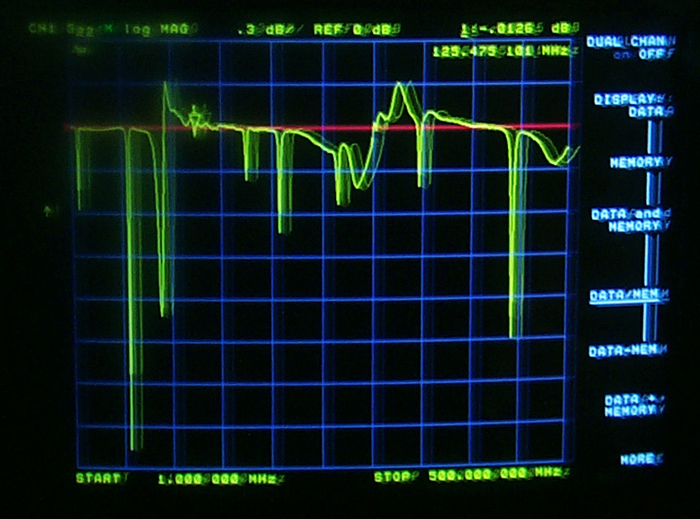
This project adresses the need for low-cost wireless ID tags. The price scaling of silicon IC-based devices has thus far been unable to produce electromagnetic ID tags that cost less than 10 cents each, even in volume quantities of one million. Among the various tag technologies we have investigated, planar electromagneticaly resonant structures seem to be the most promising in terms of cost, manufacturability, read range, and cost of the tag reader. Although some types of multiply-resonant electromagetic structures have existed commercially for decades, a systematic process and design theory for fabricating such structures has been lacking. We are currently exploring tag designs which can produce on the order of 10 distinct electromagnetic resonances which can be used as bits of information. Our research challenge is to relate the physical geometry of the tag to its electromagnetic spectrum and to increase the areal bit density of the tag, that is the number of resonances that can be produced per unit area.

Thus far, we have achieved 8 resonances within a 7.5 sq. in. area. More resonances are possible with finer line-widths, presently limited by our fabrication process.
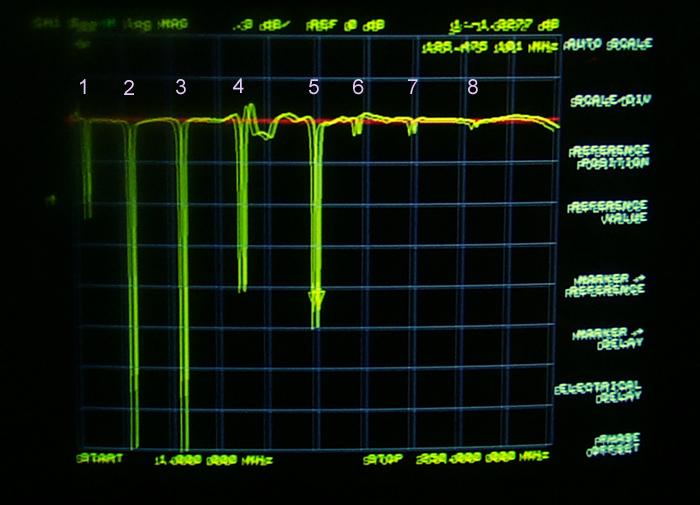
Part of this work includes converting this analog spectrum to digital bits as shown below:
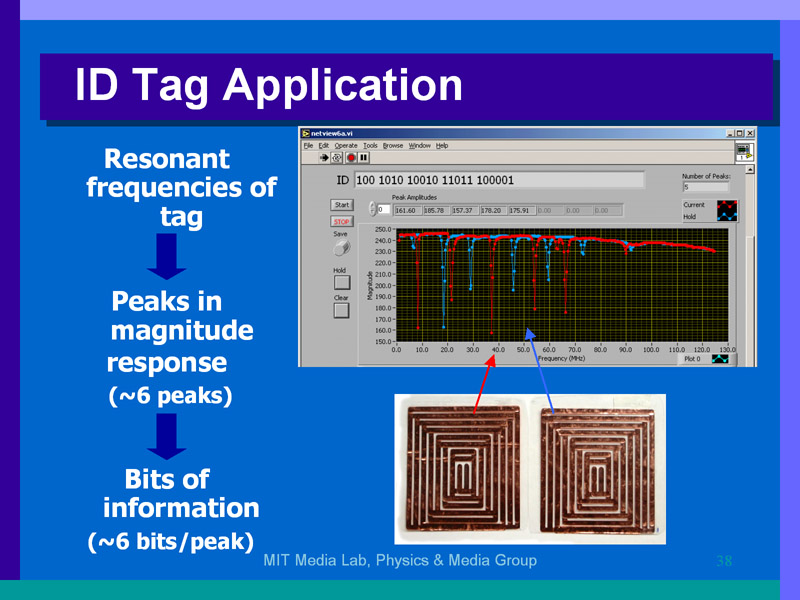
Each of these peaks can be individually tuned over a range of a few
percent. Given the frequency resolution of our home-built tag
readers, and the manufacturing tolerances (variability among identical tags)
it is possible to safely discern about 8 frequency positions for
each peak.
Assuming we have, for example, 5 peaks, this gives a bit estimate of:
We are currently working to increase this number to achieve over 20 bits.
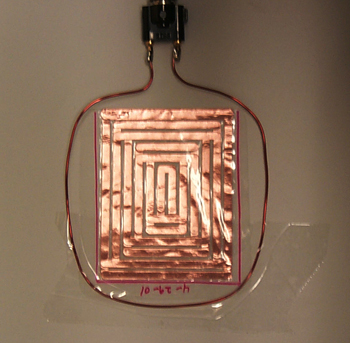
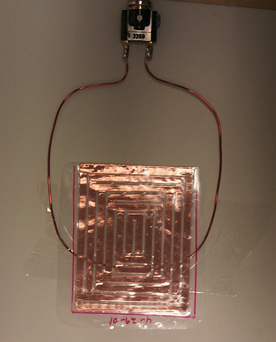
If the tag is not uniformally excited by the AC field, additional higher-frequency excitations will result from local current paths producing a spectrum such as the following:
